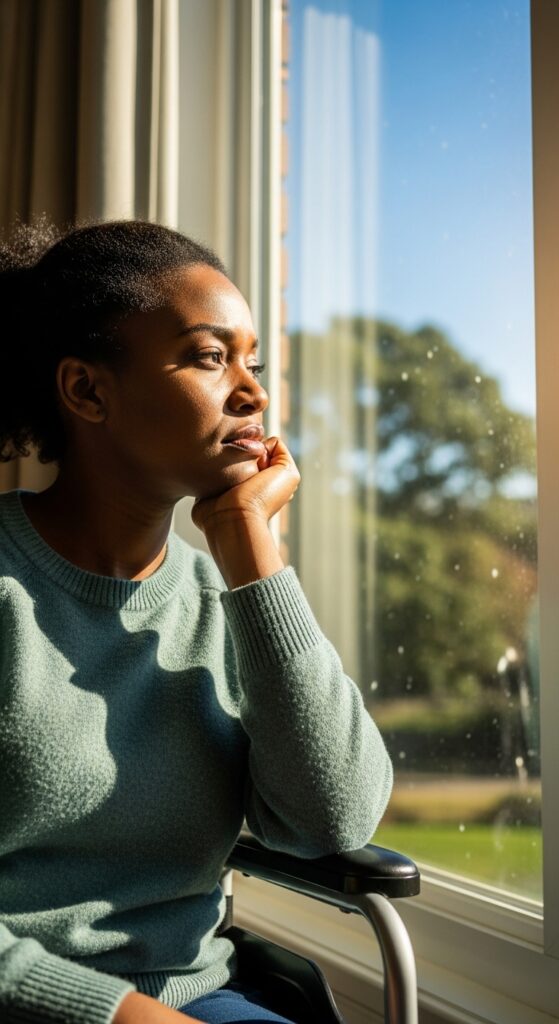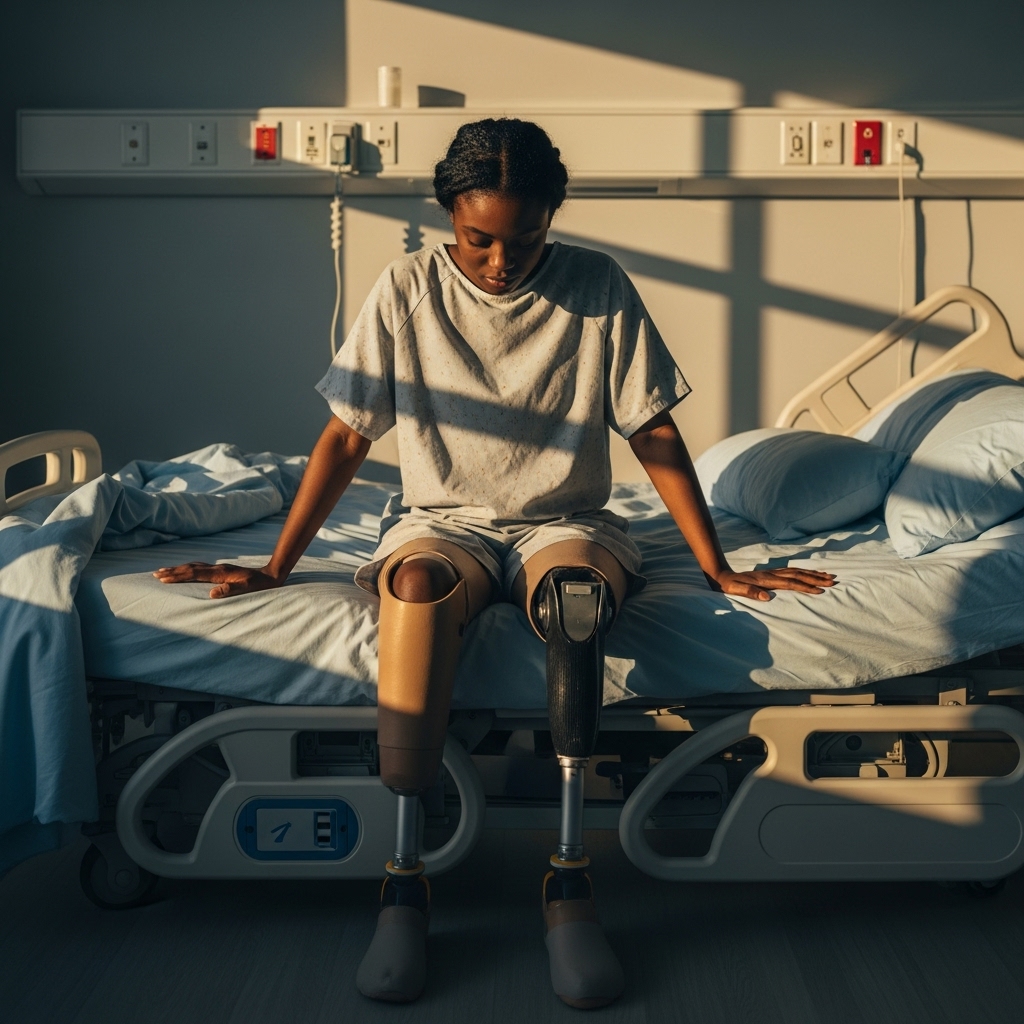Even after more than three decades of concerted global efforts to enshrine inclusive sexual and reproductive health policies, women with disabilities in Africa continue to encounter formidable obstacles in accessing essential services and exercising their reproductive rights. Their marginalization is driven by an interplay of poverty, gender inequality, limited education and entrenched cultural and legal norms that overlook their needs. The resulting void in accessible information and services fuels a cascade of preventable outcomes, including unintended pregnancies, unsafe abortions and an elevated risk of HIV infection—issues that seldom surface in mainstream public discourse across the continent.
A team of global health researchers led by Obasanjo Afolabi Bolarinwa, Aliu Mohammed and Clifford ObOdimegwu sought to illuminate these disparities by delving into the latest Demographic and Health Survey (DHS) data from Chad, the Democratic Republic of Congo, Kenya, Malawi, Mali, Mauritania, Nigeria, Rwanda, South Africa and Uganda. Their study encompassed 16,157 women aged 15 to 49 who reported at least one functional difficulty—whether in seeing, hearing, speaking or walking—and assessed two critical dimensions: their level of sexual health knowledge and their use of modern contraceptives. By mapping these indicators across regions and employing advanced statistical techniques such as Bayesian inference and spatial modeling, the researchers unveiled stark contrasts in access and uptake.
The analysis revealed an alarmingly low baseline of sexual health knowledge among women with disabilities. In Nigeria, a mere 3 percent demonstrated basic understanding of sexual health concepts, while Uganda—recorded as the best-performing nation in this cohort—saw only 27 percent reach that threshold. Modern contraceptive use mirrored this trend of deprivation: just 1 percent of women with disabilities in the Democratic Republic of Congo reported using any method, compared with 27 percent in Uganda. These figures emphasize both the severity and the uneven distribution of barriers to reproductive autonomy.

Spatial disparities emerged not only between countries but also within them. Mauritania, Nigeria, Uganda, Chad and the Democratic Republic of Congo clustered at the bottom of the spectrum, where combined levels of sexual health knowledge and contraceptive use among women with disabilities languished. By contrast, Kenya, Malawi, Mali, South Africa and Rwanda occupied the upper tier, suggesting that targeted policies and community initiatives in these nations have made inroads toward bridging the information–access divide.
This geographic mosaic highlights the critical role of localized interventions that align educational outreach with availability of contraceptive services. Education surfaced as a linchpin for change. Women with
formal schooling were significantly more likely to possess adequate sexual health knowledge and to translate that awareness into contraceptive uptake. Marital status, community literacy rates, household wealth and urban versus rural residence further shaped these outcomes, revealing how intersectional disadvantages compound the isolation of women with disabilities. Younger women, those who remain unmarried and those residing in low-literacy, low-income rural areas face the harshest struggles in asserting control over their reproductive choices.
Formats tailored to diverse sensory needs—such as braille, sign language interpretation and audio materials—remain exceptionally scarce or altogether absent across much of Africa. As Bolarinwa and colleagues observe, “When women understand their reproductive health needs and know how to access services, they are more likely to use contraceptives.” Yet the structural neglect of disability-inclusive communication reinforces patterns of exclusion, rendering many women invisible within healthcare systems that neither anticipate nor accommodate their specific requirements.
Beyond informational deficits, socio-cultural stigmas perpetuate myths that women with disabilities are either asexual or unfit for motherhood. These damaging perceptions shape provider attitudes, birth control policies and even community acceptance, exacerbating the reluctance of many women to seek care. Economic barriers—ranging from direct costs of contraception to transportation hurdles—further compound the problem, especially where subsidized or free options are not systematically extended to women with disabilities.

To translate research insights into tangible improvements, the authors recommend a multipronged strategy. First, resources must be concentrated on geographic hotspots identified by spatial modeling, ensuring that the most vulnerable regions receive urgent support. Second, sensitivity to the diverse profiles of women with disabilities—particularly those who are uneducated, unmarried, rural, young or economically disadvantaged—should
shape program design. Third, inclusive educational campaigns must employ accessible formats and partner with community and religious leaders to dismantle stigma and foster environments of acceptance. Finally, contraception should be made affordable or free, and primary healthcare services need adaptations that guarantee physical, communicational and attitudinal accessibility for all.
These prescriptions carry implications far beyond individual health outcomes. By empowering women with disabilities to make informed reproductive choices, African nations stand to diminish health inequalities, curb preventable maternal morbidity and mortality, and disrupt cycles of poverty. The integration of disability-friendly services into national health frameworks not only upholds fundamental human rights but also strengthens public health systems by broadening their reach and responsiveness.
Ultimately, closing the gulf in sexual health for women with disabilities demands both political will and sustained investment. Policymakers, health practitioners and advocates must collaborate to embed disability inclusion into every layer of sexual and reproductive health programming. Only by doing so can Africa move closer to achieving the universal coverage and equity envisioned by global health treaties and national constitutions alike, ensuring that no woman is left behind in the quest for bodily autonomy and dignity.
Source: Sexual health is an extra struggle for women with disabilities



